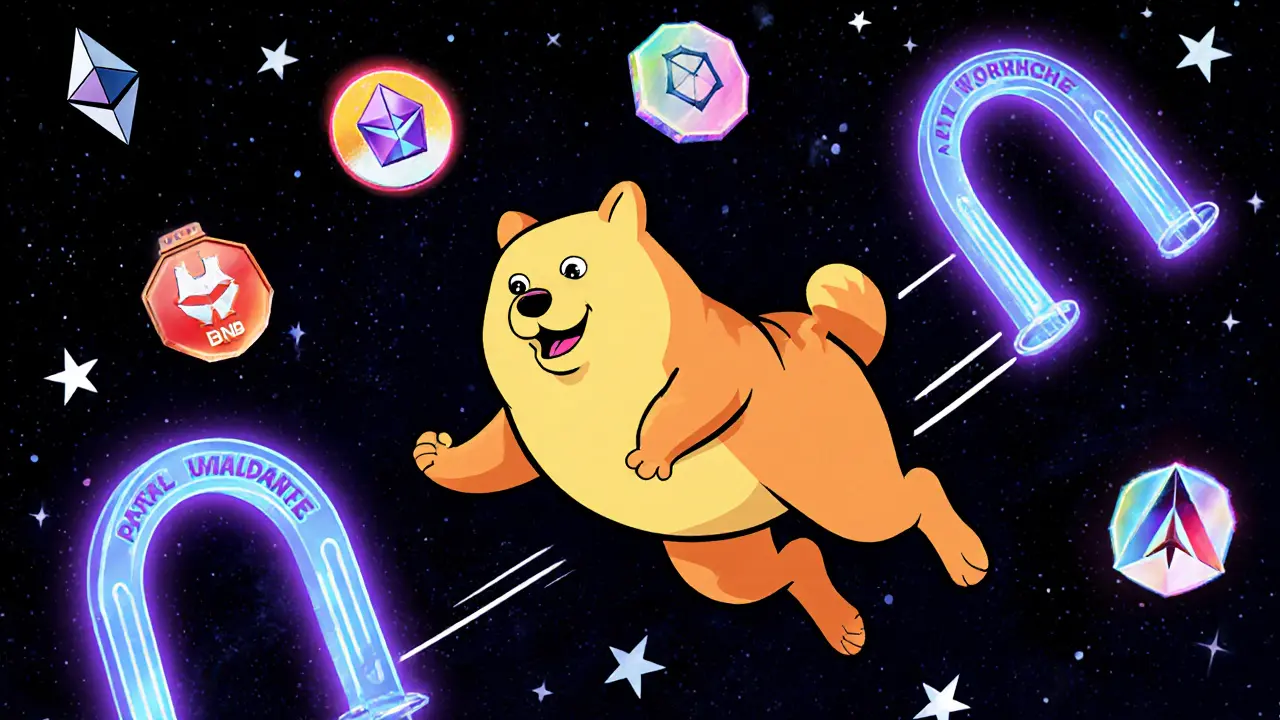
DogeVerse Multi-Chain Explorer
Bridge Details
Transaction Type:
Source Chain:
Destination Chain:
Amount: DOGEVERSE
Gas Fee:
Bridge Technology:
Status:
Supported Blockchains
Ethereum
Mainnet
High throughput, widely adopted
BNB Chain
Binance Smart Chain
High throughput, low fees
Polygon
Layer-2 Scaling Solution
Ethereum-compatible, low gas fees
Base
Ethereum-Compatible L2
Coinbase-backed, low-cost transactions
Solana
Fast, Low-Fee Blockchain
High-speed, minimal fees
Avalanche
Sub-Network Platform
Rapid finality, customizable networks
Bridge Technology
DogeVerse uses two bridge technologies:
- Wormhole: A cross-chain messaging layer connecting Solana, Ethereum, BNB Chain, Polygon, Avalanche and Base
- Portal Bridge: Proprietary bridge routing DogeVerse through secure wormholes to each target chain
When moving DOGEVERSE from one chain to another, the bridge locks the original tokens on the source chain, mints a matching amount on the destination chain, and vice-versa.
Quick Summary
- DogeVerse (DOGEVERSE) is the first true multichain Doge meme token, live on six blockchains.
- It raised $17million in an ICO (April‑June2024) and sold 57billion tokens.
- Cross‑chain moves use Wormhole and Portal Bridge technology, not simple wrapped assets.
- Staking rewards come from a 10% supply pool with a minimum 7‑day lock.
- Price volatility is typical for meme coins, but YTD gains exceed 80% (Oct2025).
If you’ve heard the name DogeVerse a multi‑chain Doge‑themed meme cryptocurrency launched in June2024 and wonder what sets it apart from Dogecoin or Shiba Inu, you’re in the right place. Below we break down the token’s tech, economics, how you can actually use it, and the risks you should weigh before you jump in.
What is DogeVerse?
DogeVerse (ticker DOGEVERSE) positions itself as a community‑driven meme ecosystem that also delivers real cross‑chain utility. The project’s narrative follows Cosmo a cartoon Doge that hops between blockchains via Portal Bridge wormholes, a story meant to make the technical side more approachable.
At launch the token lived on Ethereum the most widely adopted smart‑contract platform, then expanded to five additional networks: BNB Chain Binance’s high‑throughput blockchain, Polygon a layer‑2 scaling solution for Ethereum, Base an Ethereum‑compatible L2 built by Coinbase, Solana a fast, low‑fee blockchain popular with DeFi and NFT projects and Avalanche a platform known for its sub‑networks and rapid finality.
How the Multi‑Chain Magic Works
True multichain support means DogeVerse isn’t just a wrapped token hopping from one chain to another. The project leverages two bridge protocols:
- Wormhole a cross‑chain messaging layer that connects Solana, Ethereum, BNB Chain, Polygon, Avalanche and Base
- Portal Bridge a proprietary bridge that routes DogeVerse through secure wormholes to each target chain
When you move DOGEVERSE from Ethereum to Solana, the bridge locks the original tokens on Ethereum, mints a matching amount on Solana, and vice‑versa. This approach keeps total supply constant while allowing each chain to benefit from its own fee structure and transaction speed.
Because the token lives natively on each network, DeFi apps on Solana or Polygon can interact with DOGEVERSE without extra wrapper contracts. In practice, that translates to lower gas fees (often under $0.01 on Solana) and faster confirmation times compared to a single‑chain meme token that’s stuck on Ethereum’s high‑cost blocks.
Token Economics & ICO Highlights
The initial coin offering ran from 8April2024 to 8June2024, selling 57billion DOGEVERSE at a price of $0.0000057148987 each. The soft cap was $8.84million; the hard cap of $17million was reached, signaling strong early demand despite a bearish market backdrop.
Key supply numbers:
- Total supply: 57billion tokens (fixed).
- Staking pool: 10% of total supply reserved for reward distribution.
- Team & advisors: 5% locked for 12months, released quarterly after the lock period.
- Liquidity provision: 15% allocated to DEX pools across the six chains.
As of October2025 the token trades around $0.00000552 on CoinMarketCap, with daily volume hovering near $300‑$350 on CoinGecko. The price has shown typical meme‑coin volatility, yet year‑to‑date gains sit at roughly 89%.
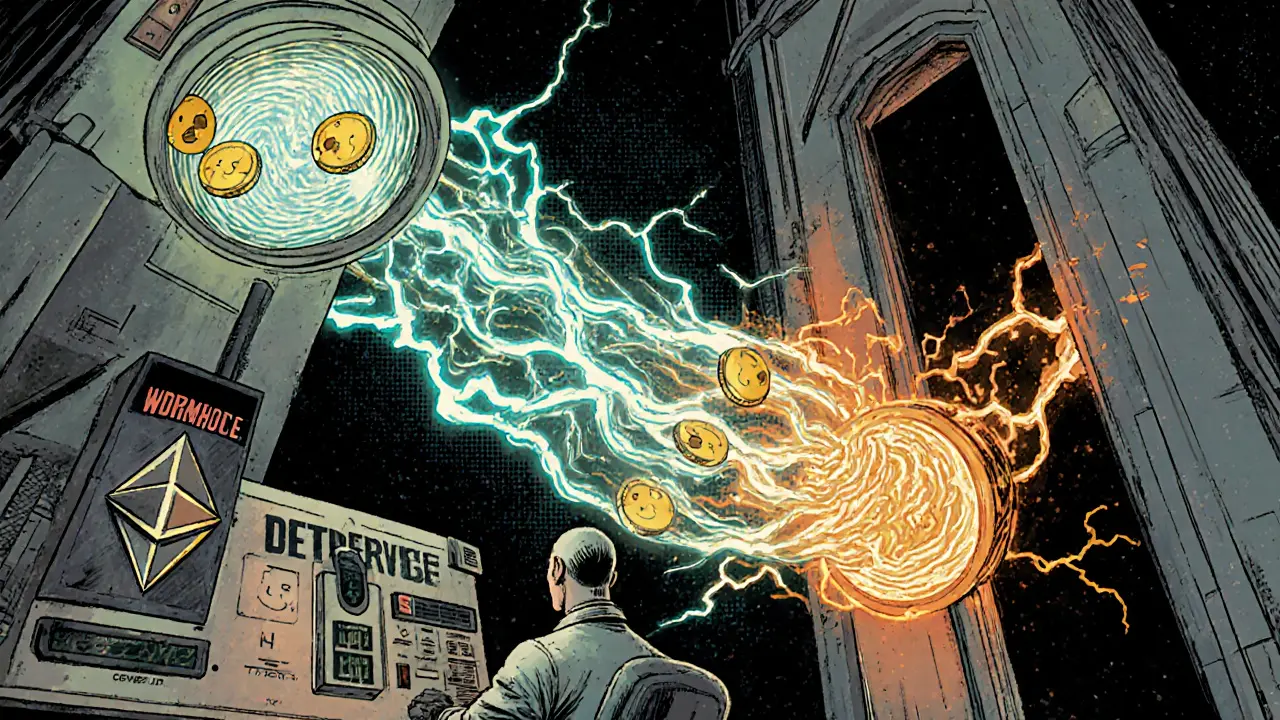
Staking & Utility Features
DogeVerse isn’t just for speculation. Holders can stake their tokens through the official DApp, earning a variable APY drawn from the 10% reward pool. The minimum lock period is seven days, after which you can withdraw your stake and any accrued rewards.
Staking serves two purposes:
- It locks supply, which can help reduce price pressure during sell‑offs.
- It provides a modest yield that encourages longer‑term holding, a rarity among meme coins.
Because the staking contract is deployed on each supported chain, you can earn rewards on the network where you have the best gas fees. For example, staking on Polygon typically costs pennies, while the same action on Ethereum may cost several dollars.
How DogeVerse Stacks Up Against Other Meme Coins
| Feature | DogeVerse | Dogecoin | Shiba Inu |
|---|---|---|---|
| Launch year | 2024 | 2013 | 2020 |
| Chain support | 6 (ETH, BNB, POLY, Base, SOL, AVAX) | Bitcoin‑derived (single chain) | Ethereum (single chain) |
| Bridge tech | Wormhole + Portal Bridge | None (native) | None (native) |
| Staking rewards | Yes (10% supply pool, 7‑day lock) | No | No |
| ICO fundraising | $17M | N/A (no ICO) | N/A |
| Typical gas fees | Varies; as low as $0.001 on SOL/POLY | $2‑$5 (BTC fees) | $0.5‑$2 (ETH fees) |
In short, DogeVerse offers technical depth that most meme coins lack, but that same complexity can intimidate newcomers and increase attack surface for bridge exploits.
Step‑by‑Step: Buying and Using DogeVerse Across Chains
- Choose a wallet that supports multiple networks (e.g., MetaMask, Trust Wallet, or Phantom for Solana).
- Load the native token for your preferred chain (ETH for Ethereum, BNB for BNB Chain, MATIC for Polygon, etc.) to cover gas costs.
- Visit a decentralized exchange on your chosen chain:
- Ethereum - Uniswap V3
- BNB Chain - PancakeSwap
- Polygon - QuickSwap
- Solana - Raydium
- Avalanche - Trader Joe
- Base - BaseSwap
- Swap a stablecoin (USDC, USDT) or the native token for DOGEVERSE. The pair is usually listed as DOGEVERSE/USDC.
- If you want to move the token to another chain, use the official bridge UI on thedogeverse.com. Select “Bridge”, pick source and destination networks, enter the amount, and confirm the transaction. The bridge will lock the source tokens and mint the destination version.
- To stake, navigate to the “Staking” tab on the DApp, connect the wallet on the chain you used, and stake the amount you prefer. Remember the 7‑day lock period.
The whole process typically takes 15‑30minutes for a first‑time user, assuming you have the required gas tokens.
Risks, Drawbacks, and Things to Watch
Every meme coin carries speculation risk, and DogeVerse adds a few extra layers:
- Bridge vulnerabilities: Cross‑chain bridges have been hacked before. While Wormhole and Portal Bridge have passed several audits, any breach could freeze or burn tokens.
- Liquidity fragmentation: Because liquidity is split across six DEX pools, large trades may suffer slippage on less‑used chains (e.g., Base).
- Community size: Compared to Dogecoin’s 10‑million‑plus Twitter followers, DogeVerse’s social presence is modest, which could limit price pumps driven by hype.
- Regulatory gray area: Meme tokens are often scrutinized for securities classification, and multichain projects may face extra compliance questions.
- Technical learning curve: New users need to understand wallet management on multiple chains, which can be daunting.
If you’re risk‑averse, start with a small amount on a chain you already use, and keep the rest in a hardware wallet until you feel comfortable.
Future Outlook and Community Plans
Looking ahead to 2026, the DogeVerse team has outlined a roadmap that includes:
- Launching a native NFT marketplace where Cosmo‑themed collectibles can be bought with DOGEVERSE.
- Integrating with several Play‑to‑Earn games that run on Solana and Polygon, leveraging the low‑fee environment.
- Expanding bridge redundancy by adding LayerZero support, reducing single‑point‑of‑failure risk.
- Community grants for developers who build DeFi tools around the token.
Those moves could boost utility beyond pure speculation, but success will still hinge on community growth and broader adoption of multichain trading habits.
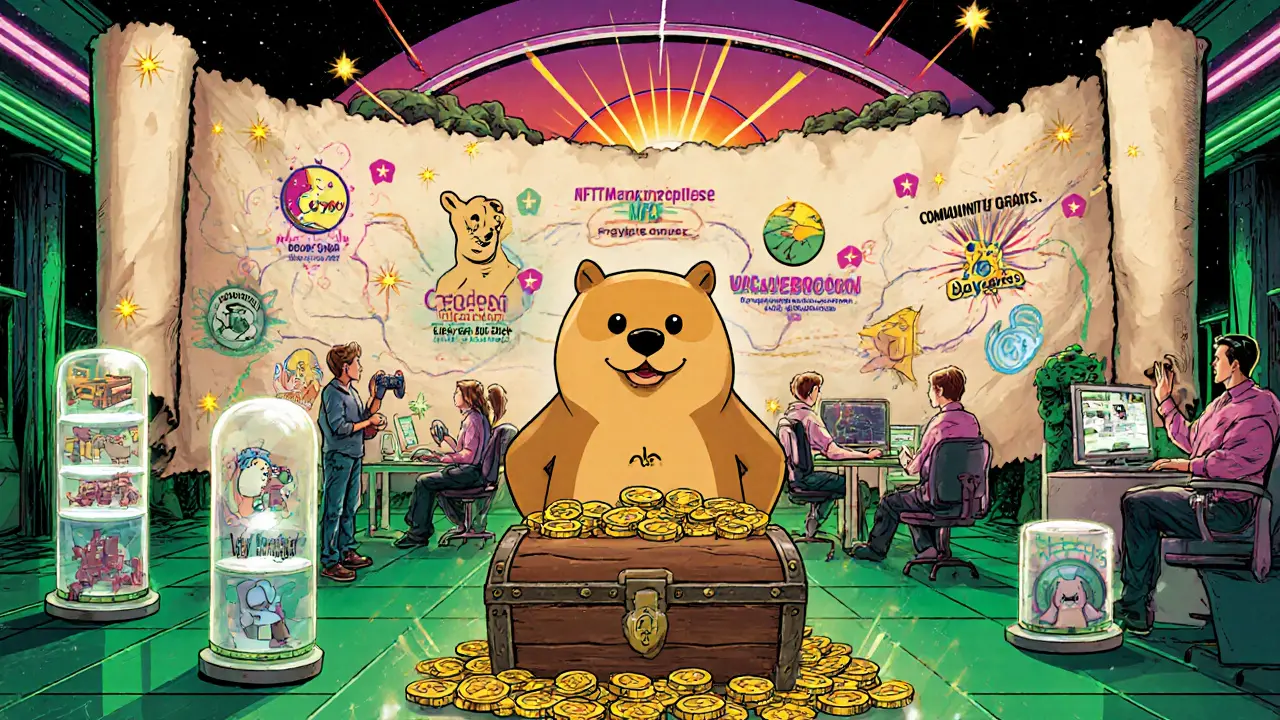
Frequently Asked Questions
What blockchains does DogeVerse run on?
DogeVerse is live on Ethereum, BNB Chain, Polygon, Base, Solana, and Avalanche.
How can I move DOGEVERSE from one chain to another?
Use the official bridge on thedogeverse.com. Choose the source chain, the destination chain, enter the amount, and confirm. The bridge locks the tokens on the source chain and mints the equivalent on the target chain.
Is there a staking reward for holding DOGEVERSE?
Yes. Ten percent of the total supply is set aside for staking rewards. The APY varies based on total staked volume, and the minimum lock period is seven days.
What are the main risks of investing in DogeVerse?
Key risks include bridge exploits, fragmented liquidity across six networks, limited community size compared to established meme tokens, regulatory uncertainty, and the usual high price volatility of meme coins.
How does DogeVerse differ from Dogecoin?
Dogecoin runs solely on its own blockchain (a fork of Bitcoin) and has no built‑in staking or cross‑chain capability. DogeVerse, by contrast, lives on six major chains, uses Wormhole and Portal Bridge for transfers, and offers a staking pool.

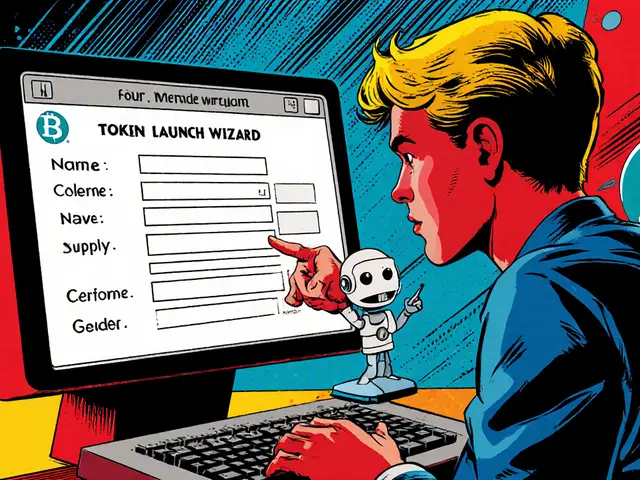

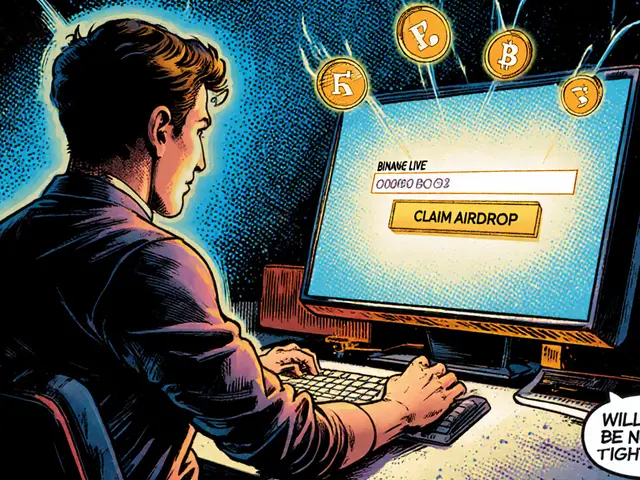
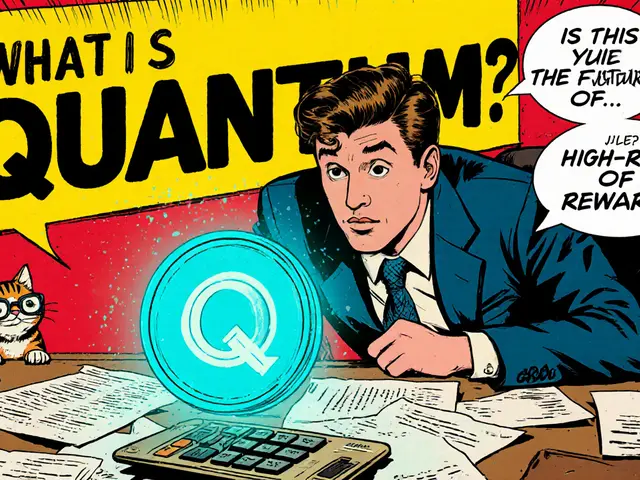
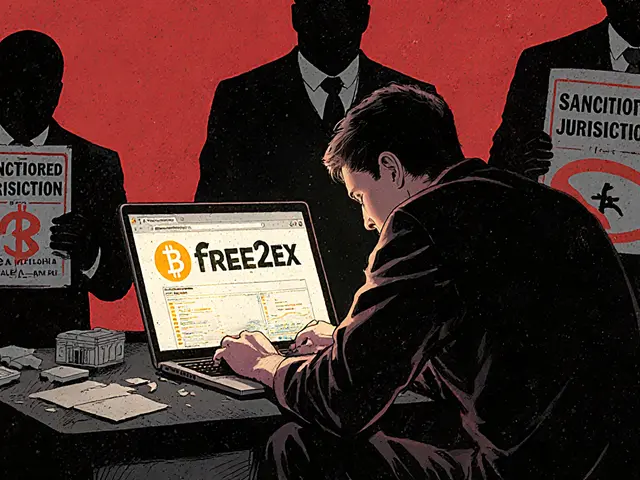
There are 17 Comments
Aditya Raj Gontia
Deploying DogeVerse across six ecosystems demands deep interoperability, so the Wormhole and Portal Bridge act as cross‑chain messaging layers that lock original tokens and mint equivalents on the target ledger.
Kailey Shelton
The token looks like another meme project trying to ride the multi‑chain hype.
Angela Yeager
Hey folks, let me break down how DogeVerse actually works on a technical level.
First, the contract is deployed on each supported chain – Ethereum, BNB Chain, Polygon, Base, Solana, and Avalanche – using the same ERC‑20 or SPL standard, which makes the token recognizable by wallets on those chains.
When you initiate a bridge transfer, the source chain’s bridge contract receives the tokens and locks them in a vault. This prevents double‑spending while the counterpart contract on the destination chain mints a wrapped version.
The Wormhole protocol handles the message passing; it batches transactions, signs them with a validator set, and posts a proof on the destination chain.
Portal Bridge is a proprietary routing layer that adds an extra verification step, ensuring that the wrapped token’s supply stays in sync with the original total supply.
Both bridges charge a modest gas fee – typically a few thousandths of a DOGEVERSE – which is deducted before the minting step.
Liquidity pools on DEXs often pair DOGEVERSE with native chain tokens, enabling traders to swap across chains without needing to unwrap.
One practical tip: always double‑check the destination address format, especially when moving between EVM‑compatible chains and Solana, because the address encoding differs.
Overall, the architecture is fairly standard for multi‑chain meme tokens, but keep an eye on the validator sets for Wormhole as any compromise could affect the bridging security.
vipin kumar
What most people don’t see is that the bridge contracts have hidden back‑doors that allow a small group of validators to reroute tokens at will.
Lara Cocchetti
Using a meme token to drive cross‑chain finance is ethically dubious; it encourages speculation over real utility.
Mark Briggs
Great, another token that can be moved everywhere. Wow.
mannu kumar rajpoot
Honestly, if you’re still trusting a project that relies on two bridges, you’re just handing over control to the same centralizers who built the meme in the first place.
Tilly Fluf
While the technical documentation is thorough, I would recommend users approach the bridging process with caution, ensuring they verify contract addresses before proceeding.
Darren R.
One must consider, dear readers, that the very act of proliferating a meme token across multiple ledgers, while seemingly innocuous, may in fact constitute a subtle form of digital colonisation, a phenomenon whereby the underlying economics are manipulated to perpetuate a cycle of hype‑driven value extraction, all under the guise of community‑driven decentralisation, which, paradoxically, may erode the foundational principles of trustless exchange.
Hardik Kanzariya
Hey everyone, if you’re feeling unsure, start with a tiny amount on the testnet version of the bridge – it’s a low‑risk way to see how the lock‑mint process behaves before moving larger sums.
Shanthan Jogavajjala
From a technical standpoint, the cross‑chain messaging relies on a validator quorum; if that quorum is compromised, the integrity of the lock‑and‑mint cycle could be jeopardized, leading to potential double‑spend scenarios.
Jack Fans
Just a heads‑up-when you bridge to Solana, remember that the token will appear as a wrapped SPL asset, so you’ll need a compatible wallet like Phantom to see it; also, double‑check the fee estimates because they can fluctuate dramatically with network congestion.
Adetoyese Oluyomi-Deji Olugunna
One might argue that the very notion of a "meme" token, when situated within the broader tapestry of decentralized finance, signals a certain cultural gravitas that elevates the discourse beyond mere speculation.
Krithika Natarajan
Bridge fees are low but always check the exact amount before confirming.
Linda Welch
Oh, look, another "groundbreaking" meme coin that promises to revolutionize cross‑chain finance while simultaneously dumping its token price on unsuspecting newcomers, all under the banner of "multi‑chain interoperability"-a phrase that has become as overused as the term "moon" in crypto forums, and let’s not forget the ever‑present risk that these bridges, touted as secure, could be the very vectors for rug pulls, given that they depend on a handful of validators who can, at any moment, decide to reroute funds, effectively turning your investment into a digital hostage situation; nevertheless, if you enjoy the thrill of hopping from one blockchain to another like a digital nomad with a penchant for high‑risk gambling, then by all means, dive in, but keep a close eye on the gas fees, which can skyrocket unexpectedly, and remember that the meme factor often overshadows any actual utility, making the whole ecosystem a speculative roller coaster that may leave you dizzy and financially bruised.
Kevin Fellows
Sounds fun.
meredith farmer
Vipin’s point about hidden back‑doors hits the nail on the head-any system that relies on a small validator set is a potential target for centralized manipulation, especially when the token’s price is as volatile as a meme coin’s.
Write a comment
Your email address will not be published. Required fields are marked *